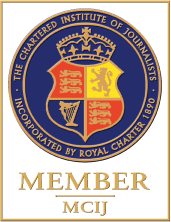Lymington-based WAN Acceleration firm Bridgeworks has done it again. The company has been awarded the accolade of Networking Communications Project of the Year at the SDC Awards 2023, after having also being a finalist in Computing’s Cloud Excellence Awards, and in the UK IT Industry Awards. This is adding to the company’s award for the Data Centre ICT Networking Innovation of the Year at the DCS Awards 2023, which it has won consecutively on several occasions previously.
Bridgeworks patented artificial intelligence (AI) and machine learning (ML) technologies accelerate the performance and efficiency of organisations’ existing technologies across their Wide Area Networks (WANs). Bridgeworks PORTrockIT WAN Acceleration dramatically improves data throughput up to 98% of bandwidth – regardless of distance.

David Trossell, CEO and CTO, of Bridgeworks Ltd, commented after the award win: “It’s such a great pleasure to be awarded and to be recognised by the IT industry for the unique work we do, insofar as mitigating the effects of latency and packet loss with WAN transmission. Our technology demonstrates that artificial intelligence and machine learning can be a force for good – particularly in healthcare, government and public sector more widely where large volumes of data often need to be transferred.”
National Institutes of Health
This includes the National Institutes of Health (NIH) in the US. WAN Acceleration powers the National Institutes of Health’s global data transfer requirements at the U.S Department of Health and Human Services. It rates as the world’s largest biomedical research agency. The National Institutes of Health has gone from never being able to achieve the required disaster recovery replication between datacentres, to be able to consistently meet their demanding requirements.
The NIH was struggling to able to address this issue for a couple of years. NetApp and Aspera couldn’t achieve this reliably . Bridgeworks was brought in to conduct a quick proof of concept (POC) that took a couple of days to set it up, and then that was it. The difference between running a NetApp Snap Mirror replication across two machines within the same datacentre and between the two machines separated across two datacentres 2,000 miles apart over a 10Gb WAN was just 6 MB/s.
The savings come not only come from the time reduction in replicating their data, but also in the confidence they now have in protecting their data. Bridgeworks has also helped NIH to resolve a number of network infrastructure issues that had plagued them for a number of years. Although very successful, we can’t fully disclose the results into the public domain. Yet, it is a substantial multi-million US dollar contract. Moreover, US-based company, CVS Caremark, connected two virtual tape libraries over 2,860 miles at full WAN bandwidth, and achieved a performance gain of 95 times the unaccelerated performance.
Maximise bandwidth
Steven Umbehocker (SU), CEO and CTO of OSNEXUS Corporation further explains why being able to mitigate latency and package, as well as having the ability to maximise bandwidth, is important to organisations that are accelerating their adoption of hybrid cloud strategies: “This can be in the form of object storage for backup and disaster recovery sites, which all puts a greater importance on the efficient use of the WAN. This is important across all sectors. However, it is especially important in sectors such as healthcare to protect data like PACS images.”
Umbehocker’s company was one of the key case studies to Bridgeworks’ award entries. He particularly feels that WAN Acceleration is critical to improving Recovery Time Objectives (RTOs) in an environment where organisations have to take cyber-security and data protection compliance very seriously. He says it’s imperative to have adequate WAN bandwidth to store data quickly, and to restore it when it’s needed – particularly in a disaster recovery situation. This is the case whether caused by humankind or by natural disaster. Efficient remote replication to disaster recovery sites also depends on it.

OSNexus is also seeing increase demand for metro clusters, where the storage is distributed across multiple sites to achieve zero downtime in the event of a site outage. Umbehocker adds:
“That’s only possible when the latency is low enough to provide sufficient and adequate performance for the workloads. PORTrockIT solves these latency issues so that metro clusters and DR sites can be deployed across a much larger geographic area. If you have an earthquake in one zone, that larger metro cluster offers benefits. You can avoid downtime, enabling organisations to link their disparate sites together. There is much latency between New York and Tokyo, and so you need something like PORTrockIT to mitigate latency.”
With high latency and packet loss, he explains that data transfers are delayed and may need to be present, which reduces performance – the transfer rate. WANs are typically spanning portions of the public internet and/or shared dark fibre infrastructure that IT organisations don’t have much control over, and simply upping bandwidth doesn’t address the latency issues. A different approach is required to boost WAN performance – designed to specifically address inherent latency issues and packet loss.
Successful year
As recently highlighted in GPSJ, this year has been a successful year for Bridgeworks. It saw the company travelling to the British Embassy in Washington DC to participate in a Thought Leadership AI programme seminar and reception. A select number of British companies were invited to showcase their artificial intelligence (AI) and zero trust architecture (ZTA) solutions. The welcoming speech was delivered by Jamie Eykyn, Chairman of Bridgeworks.
In his speech in Washington, he said: “The world of technology has advanced immeasurably in the 50 years since I was involved developing digital ticketing systems. From point solutions to specific problems, to integrated management systems. Nowadays, there’s also the deployment of advanced AI and cloud-based high-speed communications and compute, and the ability to co-ordinate a multitude of activities from a bewildering number of data collection points in virtual real-time across – for example – a battlefield.” WAN Acceleration is therefore highly flexible.
For years David Trossell has supported for the promotion of women in technology by backing Brockenhurst College’s STEM Awards. More to the point, with regard to the SDC Awards, he stepped aside to give the limelight to Pippa Hodgson, a software development engineer who works as part of Bridgeworks’ research and development team. Trossell concludes by wishing her and everyone else a happy and prosperous new year in 2024. No doubt more awards, more award wins and more successful projects will be in the offing then.







Recent Comments